Wellness 2022: Gut Health – Intro

Unfortunately, modern-day living is not good for gut health – poor soils, overconsumption of processed food and eating products from animals fed on unnatural feed, the over-prescription of medications, pollution and stress all lead to imbalanced gut flora and inflammation.
INFLAMMATION
Inflammation is the main way our body protects itself from injury, infection, bacteria and pathogens – it’s a response triggered when damage occurs to our tissues that allows the body to localize the damage are and then heal itself (think a swollen sore throat or swelling around an insect bite). The trouble is, if the body is unable to repair itself quickly and heal the damaged tissues, long-term chronic inflammation can occur, which sends the immune system into overdrive and can stress the digestive system.
Put into the content of your gut, if you eat foods that irritate your gut lining over and over again, you’re injuring your gut 3 meals a day, 365 days a year. You may not see the inflammation in your gut, but it’s there, compromising the gut lining, allowing indigestible matter and toxins to flood through into the bloodstream where at some point it may manifest in skin problems, candida, learning difficulties, allergies, lethargy or susceptibility to colds, flu and autoimmune problems. Where there is gut inflammation there will be skin inflammation, and this means an accelerated decline of collagen and elastin as well as susceptibility to skin problems from acne to eczema.
Looking after your digestive system with gut-friendly foods and probiotics and filling your plate with unprocessed, organic, antioxidant-rich fruits and veggies, seeds, nuts, herbs and spices is a great way to keep inflammation and disease at bay. Antioxidants help to mop up free radicals, which cause oxidative stress ad inflammation in the body.

The Art and Science of Eating
When it comes to digesting food efficiently, the problem is not about the food itself, but rather the way we grow it and prepare it and the ratios in which we eat it. Refrigeration, industrialization and our busy, modern, time-strapped lives mean that we have lost much of the knowledge of how to grow and prepare food effectively. Grains, nuts and legumes can be difficult for many of us to digest, but by fermenting and soaking them, as some cultures have done for millennia, you help reduce and eliminate gut-compromising anti-nutrients and break down the hard to digest proteins.
Grain-raised meat contains inflammatory fats. Whereas grass-fed meat contains anti-inflammatory fats. Animals are meant to eat grass not grains: and they are not meant to be pumped with antibiotics and hormones. For those who find eating meat hard on their digestion and avoid it, slow-cooking it with spices in soups and stews will help to make it easier to digest. Eating lacto-fermented foods alongside meals, as has been practiced by cultures for centuries, also aids the digestion process.
Over-farming means that conventional veggies are grown in mineral-depleted soils, which is why choosing organic is so important – plus they are non-GMO, taste better and are richer in skin-boosting plant nutrients. They also come without gut-compromising pesticides and herbicides.
For good health, instead of a meal with a predominance of meat and simple carbs, I prefer 50 percent veggies (non-tubers), 30 percent protein and 20 percent complex carbohydrates, such as sweet potato on my plate. If I am very hungry, I’ll load up on vegetables and foods containing healthy fats such as avocados, activated nuts, and grass-fed meats instead of reaching for a crusty loaf.
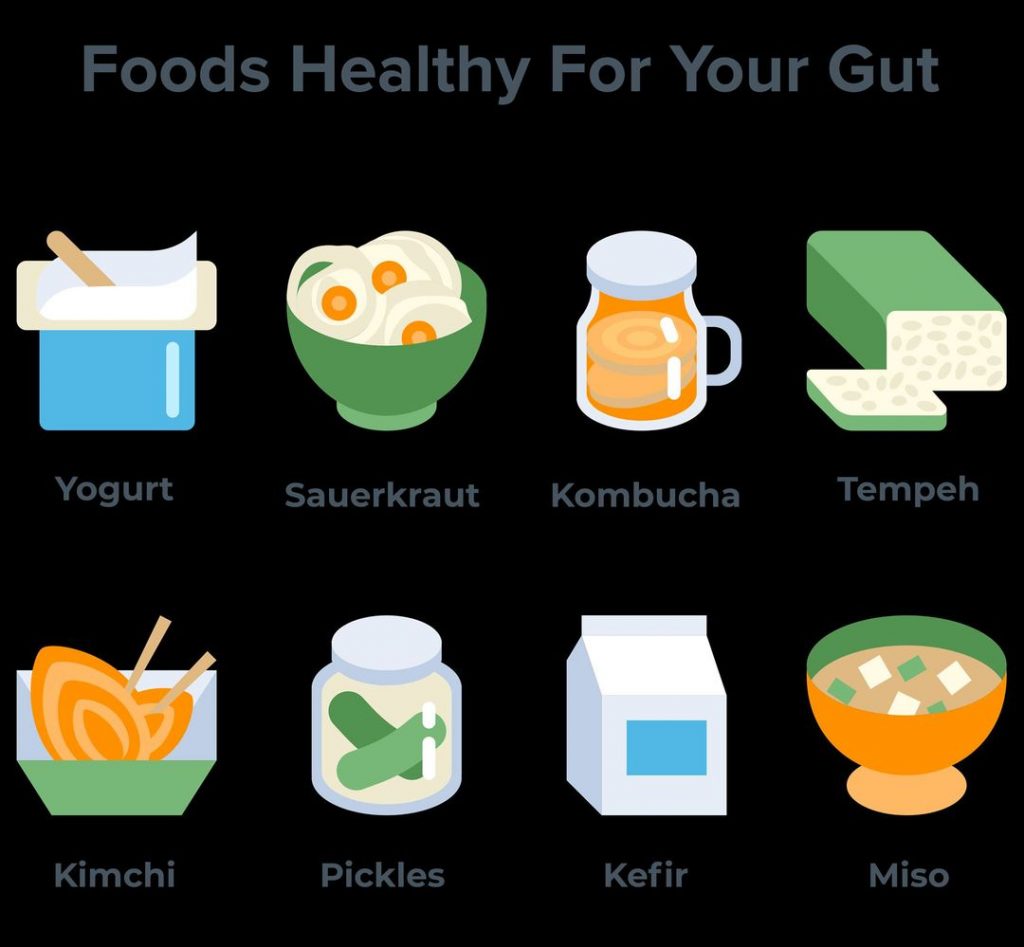
Follow Your Gut Instinct
Our guts are a thriving invisible ecosystem: they contain around 100 trillion organisms. Just like our fingerprints, the composition of gut microbiota is unique to each person and the fact that our bodies are comprised of 10 times more bacteria than cells make it unsurprising that bacteria – both good and bad- can powerfully affect our digestive health and overall health.
Our gut is where 70 percent of our immune system lies, we make nutrients (that make collagen), antioxidants (that protect skin), metabolize hormones, neutralize pathogens, make neurotransmitters and detoxifying enzymes, so it’s little wonder that the state of our gut has a profound effect on our skin and health.
A recent study showed that SIBO (small intestine bacterial overgrowth) is 10 times more prevalent in people with rosacea, and dermatitis occurs in a quarter of the people with celiac disease. Countless studies show a link between leaky gut and skin problems, while lack of hydrochloric acid in the gut can contribute to both acne and rosacea. Studies also show that those with good digestion have a healthier fatty acid profile in their skin, making their skin plumper, more hydrated and moisturized.
Good bacteria is your best friend when it comes to beautiful skin, hair and nails and by boosting it with lactic-acid bacteria (found in lacto-fermented foods), you can increase levels of hydrochloric acid and probiotics and help ameliorate and heal your skin complaints. There are numerous clinical trials that link a specific strain of bacteria with positive skin benefits, for example, ‘Lactobacillus acidophilus’ for acne, ‘Lactobacillus delbruckii’ for atopic dermatitis. The beauty of lacto-fermented foods is that you are consuming a broad-spectrum Lactobacillus probiotic, not just one or two strains as might be found in a commercial probiotic product.
The gut is so much more than just a place for digesting food – not only is it intricately linked to the state of our skin, but poor digestion can affect the health and function of every system in the body: the brain, nervous system, hormone balance, reproductive system and even the livers’ ability to promptly detoxify. Unfortunately, if your gut isn’t balanced, the body won’t be able to properly digest and utilize the nutrients from your food. As the skin, hair and nails are the last place to get nutrients (they go to more important organs first), those areas can become starved for nutrition. Additionally, if your gut is out of balance, you won’t be detoxifying optimally, and skin will suffer. Our gut is where our neurotransmitters and feel-good hormones such as serotonin are made. So, by looking after your gut health, not only will you helping your skin age well, but you will feel better about your lines and wrinkles.
Studies show that consuming lacto-fermented foods can influence both mood and acne by reducing systematic inflation, and probiotics (created through lacto-fermentation) can help eliminate disease-promoting pathogenic bacteria in the gut.
Journal Assignment:
How familiar are you with the correlation between gut health, weight loss, and total health?
What do you hope to learn this week?
Are you willing to try new techniques to better your health?
How are you feeling so far?
PS. It is time to book that SECOND consultation with Stephanie!
stephanie@newberry.com
Wellness 2022: Mediterranean – Rest & Integrate
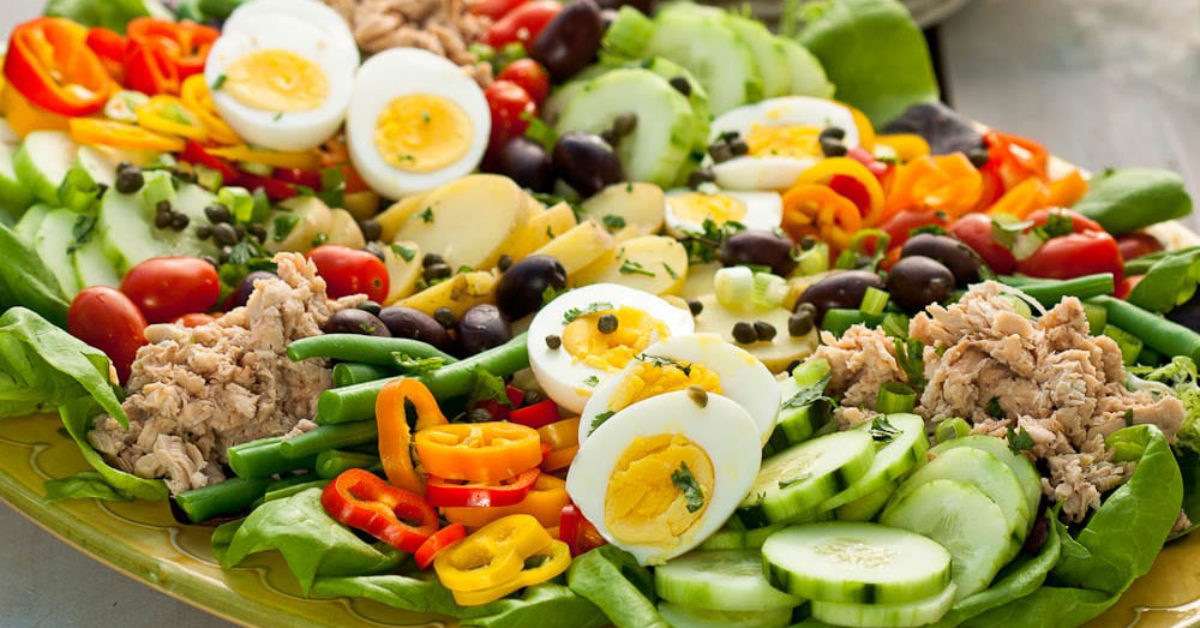
Now that you have had a chance to sample three different diets. I hope you have been journalling about how you feel about each one. In addition to treating our physical health, we also have to take care of our mental health which includes what we desire and our attachment to those desires as a way to be happy.
I encourage you to take some time for yourself today. Self care. You can do this by curling up with your favorite book, taking a luxurious bubble bath, looking for shells on the beach, or any other activity that nourishes you. One way which has been so helpful to me has been with mediation. I have selected this guided meditation for you to try which helps invoke positive energy:
To learn more about how to find happiness, and what it really means, here is another video to get you thinking.
Don’t forget to journal your feelings and reactions.
Wellness 2022: Mediterranean – Takeaway

We have discussed many of the great benefits of the Mediterranean Diet.
Pros
- Balanced and flavorful
- Promotes heart health
- Supports diabetes prevention and management
- Has mental health benefits
- Aids in Weight management
- Reduces inflammatory markers
- Associated with cancer prevention
- Environmentally friendly
BUT… there are a few cons as well.
Cons
- Some foods are costly
- Additional guidance may be necessary for certain conditions
- Some dietary restrictions may be challenging
- Allows alcohol intake
- May fall short on some nutrients
- No specific guidelines to follow
- Can be time-consuming
For some people, there may be a few drawbacks to the Mediterranean diet. However, many of these are surmountable.
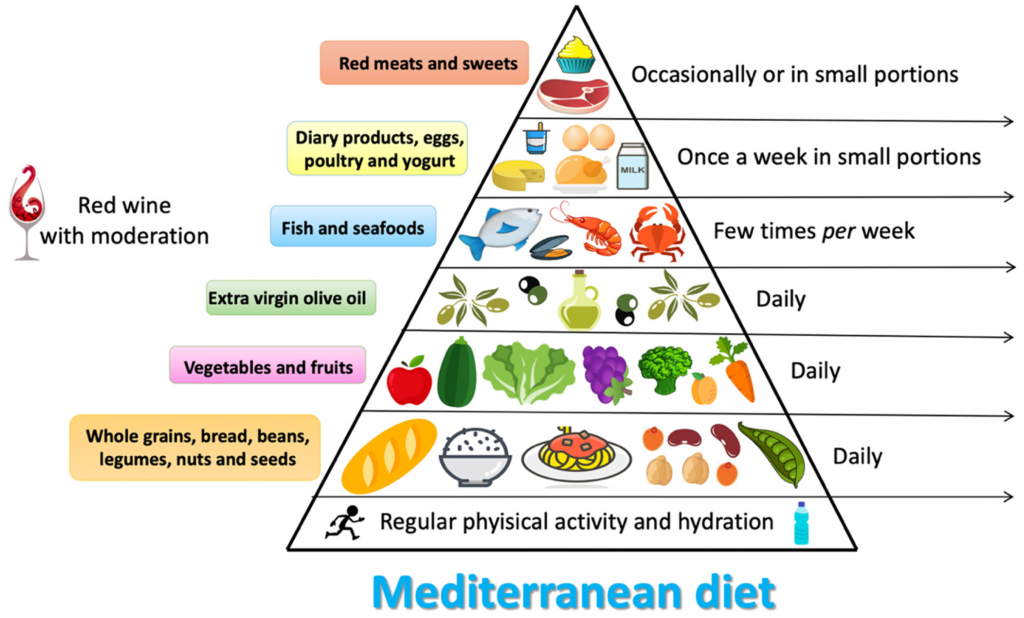
Cost
There are no expensive branded foods or special supplements that you are required to buy on the Mediterranean diet. But some consumers express concern about the cost of some foods, including fish, seeds, nuts, and olive oil.
For example, fresh seafood tends to be more expensive than other proteins. However, there are several ways to shop on a budget—even for seafood.
Cost-Saving Tips
To keep costs down, Toups recommends shopping sales at the grocery store. For example, many recipes that call for a specific variety of fish like cod or seabass can often be made with a local catch that may be a bit cheaper or on sale.
Don’t discount frozen seafood either. It is often less expensive than fresh and, when thawed, cooks up beautifully. Canned fish is another cost-effective option.
Additional Guidance May Be Needed
Even though studies suggest that a Mediterranean diet may reduce diabetes risk and support better blood sugar control, some people with diabetes may need additional guidance while on this diet.
Because there is an emphasis on grains, fruits, and vegetables (including starchy vegetables), meals may be high in carbohydrates. It’s important for people with diabetes to eat a consistent, controlled amount of carbohydrates throughout the day to avoid blood sugar spikes or dangerously low sugars (if you’re using insulin or certain oral medications).
This does not mean people with diabetes shouldn’t follow this plan. On the contrary, it can be a great choice. If you have diabetes, though, try working with a dietitian to help you plan the right carbohydrate counts for your meals within the greater framework of the Mediterranean diet.
Restrictions May Feel Challenging
This diet recommends reducing red meat and added sugar consumption, which may be difficult for some people. Those who are used to the standard American diet may consume added sugar in processed foods on a regular basis. Those following the Mediterranean diet are advised to save added sugar for special occasions.
Keep in mind any added sugar reduction is beneficial, so don’t let this deter you. Following a Mediterranean-style diet that contains a little added sugar is still more beneficial than following a Western-style diet that’s high in added sugar.
Similarly, if you’re struggling with eating red meat less often, try following this diet while incorporating lean and unprocessed red meats like flank, top round, and brisket half flat, but in smaller portions. Research suggests you’ll still reap heart-health benefits.
Concerns About Alcohol Intake
Some experts raise concerns about the regular alcohol intake (particularly wine) in the Mediterranean diet and whether this is truly beneficial to recommend.19 Toups believes it can be. “When alcohol is consumed as part of a balanced meal, and coupled with daily movement and social connections, studies find a net health benefit,” she says.
“The Mediterranean diet and other traditional diets present examples of how to safely enjoy alcohol in moderation (up to one 5-ounce glass of wine per day for women, or up to two 5-ounce glasses daily for men), in a way that may support cardiometabolic health and help to foster positive social connections,” says Toups.
But what about when alcohol is consumed in other scenarios? “When alcohol intake is accompanied by unhealthy habits, like smoking or poor diet, or unsafe habits, like driving, obvious health risks present themselves,” she says.
The current edition of the USDA Dietary Guidelines for Americans does not recommend that people who do not currently drink alcohol start drinking, but for adults who do choose to drink alcoholic beverages, it is noted that drinking less is better for health than drinking more. When adults choose to drink, the USDA recommends one drink or less per day for women and two drinks or less for men.
May Fall Short on Some Nutrients
The USDA notes that most Americans do not get enough calcium and vitamin D in their diets. Those who choose to follow the Mediterranean lifestyle tend to consume less dairy, so they’ll want to ensure they get enough of these nutrients from other sources.
One study found that Spanish children who had low adherence to the Mediterranean diet don’t get enough calcium to reach recommended intake levels even when dairy foods were used to compensate for the low adherence. Researchers determined this was because other foods containing calcium were not being consumed.
Fortunately, dairy is not the only source of calcium and vitamin D. There are many other sources including fortified milk alternatives, particularly soy milk and other soy products, as well as fortified orange juice, some whole-grain cereals, seafood, spinach, soybeans, or sesame seeds. Foods like these are encouraged on the Mediterranean diet.
Studies have also shown that both adults and children who adhere to this healthy pattern are likely to have a better nutrient profile, with a lower prevalence of individuals showing inadequate intakes of micronutrients.
No Specific Guidelines
Unlike many other eating patterns, the Mediterranean diet does not provide specific calorie counts, food portion sizes, or strict lists of foods to eat and foods to avoid. There is also no singular source for following this diet.
For some who prefer a more structured eating style (especially for weight loss or weight maintenance), this may present a challenge. However, the Healthy Mediterranean-Style Eating Pattern provided by the USDA can be used as a guide for those who prefer a more specific approach.
To use the guide, simply choose the calorie goal that aligns with your dietary needs then choose a variety of foods in each group and consume them over time in recommended amounts. Calorie targets for healthy adults are provided ranging from 1,600 calories per day to 3,200 per day, which vary based on age, sex, weight, and level of physical activity.
May Be Time Consuming
Shopping for Mediterranean diet foods and preparing meals is likely to take more time than heating up prepared foods or grabbing fast food on the go. On this diet, processed foods are discouraged, while balanced meals made with whole ingredients are encouraged.
Certainly, this shift may take some adjustment for some people. But many people learn to love cooking and preparing meals for themselves or their families. Additionally, you can prepare large quantities of foods in advance to use at meals later.
Journal Entry – “Daily Thoughts”
How are you feeling?
- Did you find this week easier or harder to follow along to?
- Have noticed any changes in your clarity, improved brain fog?
- Be sure and take notice of the specific areas of these guidelines that you would be able to incorporate on a daily basis.
Wellness 2022: Mediterranean – Cooking Videos

We will be cooking with Stephanie again soon but for this week, enjoy these videos by the author of the recipes from yesterday.
Wellness 2022: Mediterranean – Recipes

Hello, my friends!
I hope you have been enjoying the versatility of the Mediterranean Diet.
Take a look at a couple of recipes in the links below. We will be making one tomorrow!
Zucchini Tart
https://www.carolinelfranco.com/recipes/zucchini-tart
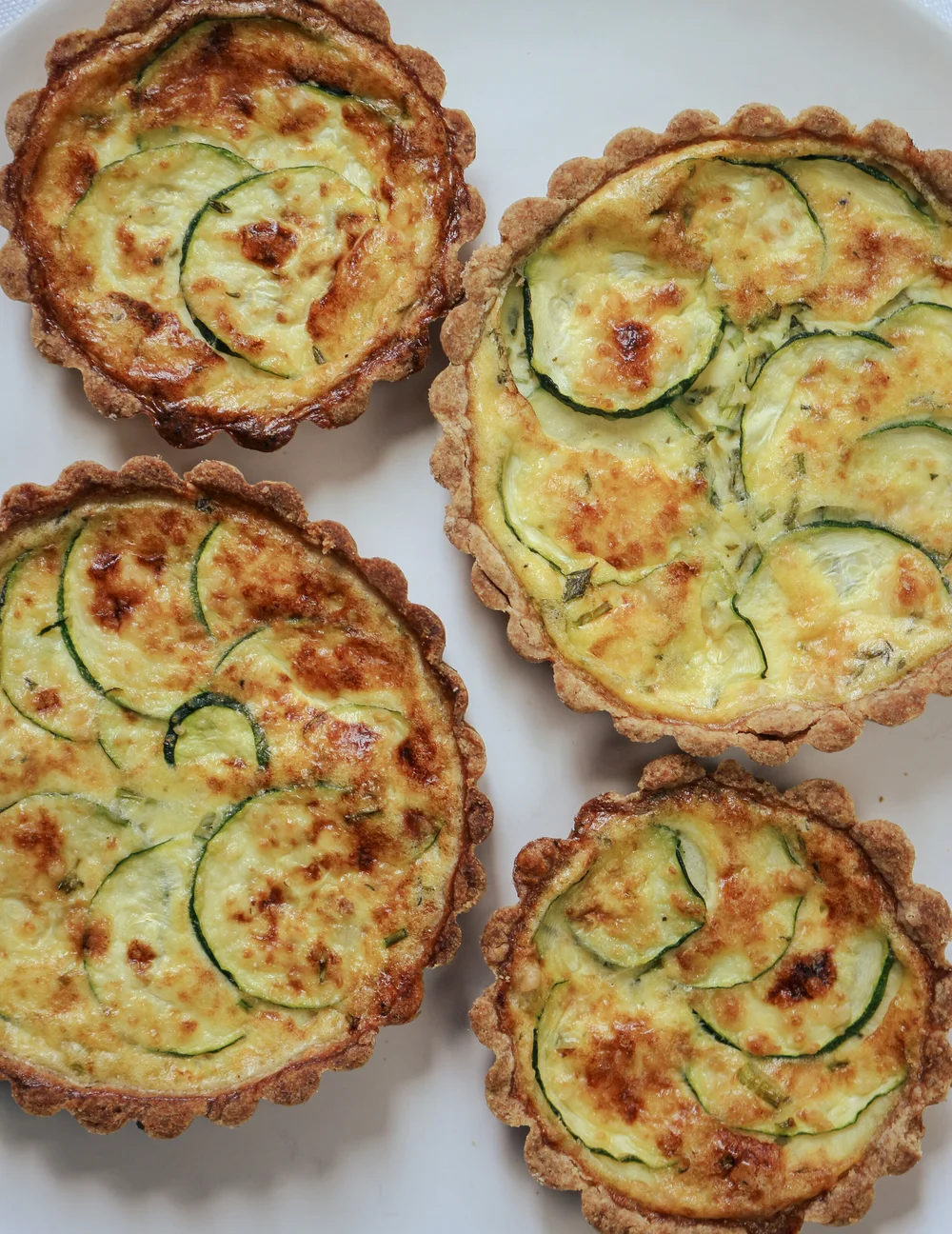
Salmon Soup
https://www.themediterraneandish.com/salmon-soup/#tasty-recipes-33832
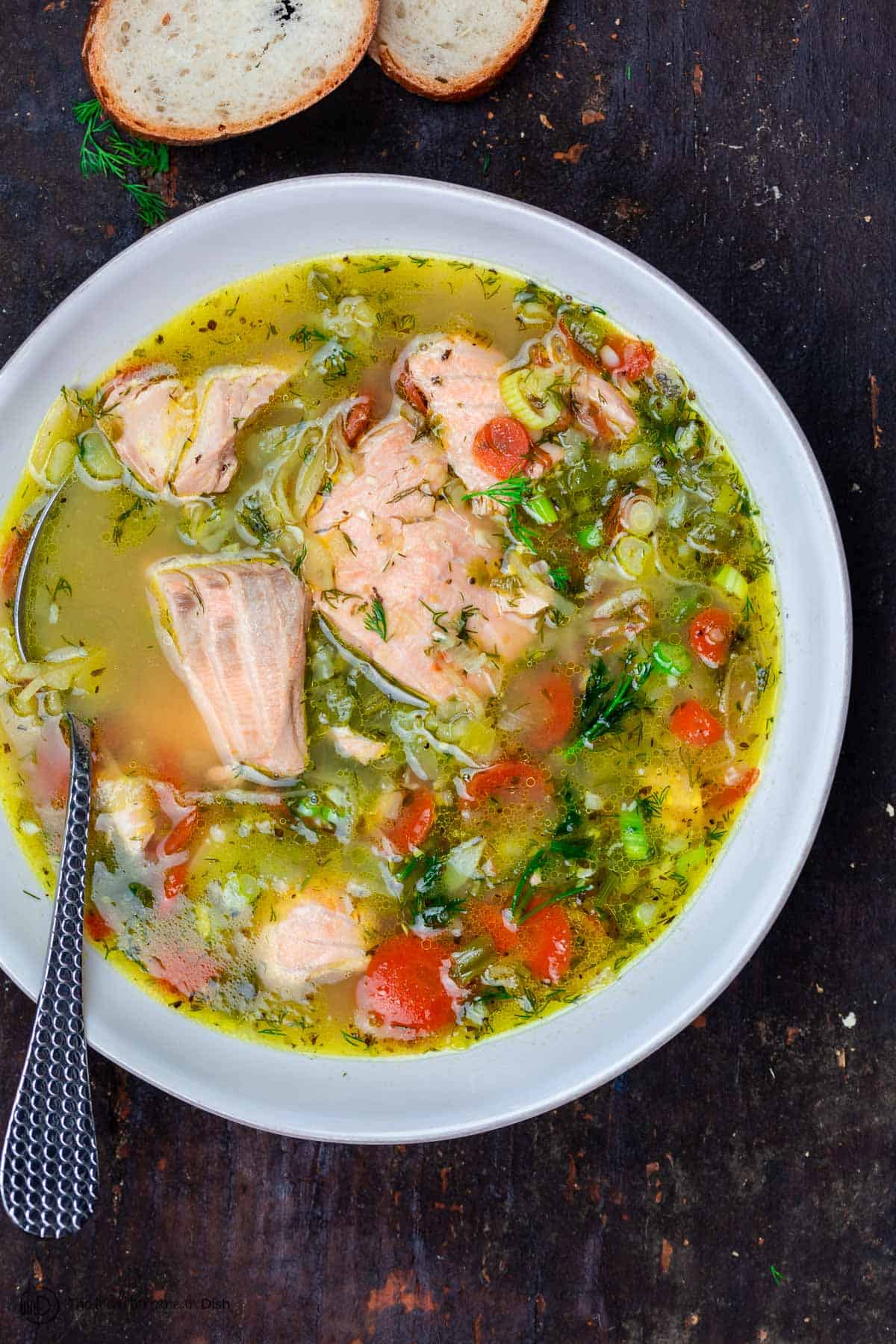
Baked Halibut
https://www.themediterraneandish.com/one-pan-mediterranean-baked-halibut-recipe-with-vegetables/

If you are not a fan of seafood – consider switching the fish out for chicken.
And remember – in the cooking clinics we often give you tips and tricks for tastier and easier versions of these same recipes!
Wellness 2022: Mediterranean – Fitness

Today’s Fitness Focus is going to be on a Full Body Workout that you can do from home!
BENEFITS OF DOING A FULL-BODY WORKOUT:
1. It improves body and muscle strength.
The key to having a stronger body is to perform exercises that require you to deal with as much weight as possible. Compound exercises are tested and proven to improve muscular strength. Even the simplest ones, such as bench presses, deadlifts, and squats, have been proven to deliver great results in terms of strength enhancement. This is because they require way more total-body movement than other drills. You can also opt for variations of those mentioned exercises according to any specific need or muscle groups you want to target. Adding these to your regular routine will help you build strength right away without any fuss, and you will begin to notice differences quickly.
2. It allows you to get the most workout in the least amount of time.
As we mentioned earlier, not everyone has the luxury of having enough time to religiously stick to an exercise program. Most of the time, we do not even have a program! We just go to the gym or prepare a mat and some dumbbells at home whenever we have the time to spare. And by time to spare, we mean less than an hour. If that is the case, would you stubbornly opt to do a few repetitions of single-joint exercises, or would you finally give in and do a multi-joint exercise? Full-body exercises are the perfect choice in such scenarios. Exercises such as spinning also provide awesome benefits, especially if you have a short time to exercise. Owning your own spinning equipment can go a long way in ensuring that you get in that 30 hour of exercise daily instead of having to run to gym. In so little time, you get to train several muscle groups.
3. Full-body training does not just benefit your body on the outside.
The physical results of full-body exercises do not stop on the surface, or even at the muscles. These workouts do not just make you strong or aesthetically pleasing. Full-body training keeps you healthy. For example, exercise is known to reduce your risk of heart disease and helps keep your blood pressure in check. This is precisely why they are recommended for those recovering from stroke and other heart-related diseases. They are also believed to help prevent diseases like several types of cancers, diabetes, arthritis, sleeping disorders, gastrointestinal problems, and even kidney issues.
Full-body exercises also help improve the health of your bones, which is especially helpful as you reach middle age. Resistance training is a good option if this is your goal. They strengthen muscles and bones effectively while keeping blood flow and oxygen flow at optimum levels.
4. It keeps your brain happy.
Full-body workout benefits your mental health just as much as it does your physical health. The physical activity you get from these exercises help preserve clarity and can even stimulate neuron growth and activity. These, in turn, help prevent the degenerative effects of aging on the brain.
Full-body workouts also help with hormonal response. When you exercise, your brain releases endorphins, which have come to be known as the “happy chemical,” which improves your mood and helps prevent depression. The physical work also stimulates testosterone and growth hormone production and release. These factors indirectly improve the formation of muscles and the burning of fat.
5. Full-body training allows you to burn more calories in a short time.
Time is always of the essence. Even as you work out, you are constantly bothered by the hundreds of things you have not yet ticked off of your task list. The good thing about full-body workouts is that they let you burn more calories than single-joint exercises. How do they do that? When you have to move several muscle groups at the same time (as in compound exercises), your body needs more energy to coordinate and provide a healthy flow of oxygen to the parts of your body that will be working out. If your goal is general fitness or fat burning, full-body exercises are the way to go.
Enjoy today’s workout!
Wellness 2022: Mediterranean – Science

Potential benefits of The Mediterranean Diet
The Mediterranean diet has been linked to a long list of health benefits.
Promotes heart health
The Mediterranean diet has been studied extensively for its ability to promote heart health.
In fact, research shows that the Mediterranean diet may even be linked to a lower risk of heart disease and stroke.
One study compared the effects of the Mediterranean diet and a low-fat diet and reported that the Mediterranean diet was more effective at slowing the progression of plaque buildup in the arteries, which is a major risk factor for heart disease.
Other research shows that the Mediterranean diet could also help lower levels of diastolic and systolic blood pressure to support heart health.
Supports healthy blood sugar levels
The Mediterranean diet encourages a variety of nutrient-dense foods, including fruits, vegetables, nuts, seeds, whole grains, and heart-healthy fats.
As such, following this eating pattern may help stabilize blood sugar levels and protect against type 2 diabetes .
Interestingly, multiple studies have found that the Mediterranean diet can reduce fasting blood sugar levels and improve levels of hemoglobin A1C, a marker used to measure long-term blood sugar control.
The Mediterranean diet has also been shown to decrease insulin resistance, a condition that impairs the body’s ability to use insulin to regulate blood sugar levels effectively.
Protects brain function
Several studies show that the Mediterranean diet could be beneficial for brain health and may even protect against cognitive decline as you get older.
For example, one study including 512 people found that greater adherence to the Mediterranean diet was associated with improved memory and reductions in several risk factors for Alzheimer’s disease.
Other research has found that the Mediterranean diet may be tied to a lower risk of dementia, cognitive impairment, and Alzheimer’s disease.
What’s more, one large review also showed that following the Mediterranean diet was linked to improvements in cognitive function, memory, attention, and processing speed in healthy older adults.
How to follow it
- Eat: vegetables, fruits, nuts, seeds, legumes, potatoes, whole grains, herbs, spices, fish, seafood, and extra virgin olive oil
- Eat in moderation: poultry, eggs, cheese, and yogurt
- Eat rarely: red meat, sugar-sweetened beverages, added sugars, processed meat, refined grains, refined oils, and other highly processed foods
Foods to eat
Exactly which foods belong to the Mediterranean diet is controversial, partly because there’s variation between countries.
The diet examined by most studies is high in healthy plant foods and relatively low in animal products and meat. However, eating fish and seafood is recommended at least twice a week.
The Mediterranean lifestyle also involves regular physical activity, sharing meals with other people, and minimizing stress levels.
You can include a mix of fresh, frozen, dried, and canned fruits and vegetables, but check package labels for added sugar and sodium.
Ideally, you should base your diet on these healthy Mediterranean foods:
- Vegetables: tomatoes, broccoli, kale, spinach, onions, cauliflower, carrots, Brussels sprouts, cucumbers, potatoes, sweet potatoes, turnips
- Fruits: apples, bananas, oranges, pears, strawberries, grapes, dates, figs, melons, peaches
- Nuts, seeds, and nut butters: almonds, walnuts, macadamia nuts, hazelnuts, cashews, sunflower seeds, pumpkin seeds, almond butter, peanut butter
- Legumes: beans, peas, lentils, pulses, peanuts, chickpeas
- Whole grains: oats, brown rice, rye, barley, corn, buckwheat, whole wheat bread and pasta
- Fish and seafood: salmon, sardines, trout, tuna, mackerel, shrimp, oysters, clams, crab, mussels
- Poultry: chicken, duck, turkey
- Eggs: chicken, quail, and duck eggs
- Dairy: cheese, yogurt, milk
- Herbs and spices: garlic, basil, mint, rosemary, sage, nutmeg, cinnamon, pepper
- Healthy fats: extra virgin olive oil, olives, avocados, and avocado oil
Foods to limit
You should limit these processed foods and ingredients when following the Mediterranean diet:
- Added sugar: added sugar is found in many foods but especially high in soda, candies, ice cream, table sugar, syrup, and baked goods
- Refined grains: white bread, pasta, tortillas, chips, crackers
- Trans fats: found in margarine, fried foods, and other processed foods
- Refined oils: soybean oil, canola oil, cottonseed oil, grapeseed oil
- Processed meat: processed sausages, hot dogs, deli meats, beef jerky
- Highly processed foods: fast food, convenience meals, microwave popcorn, granola bars
Beverages
Water should be your go-to beverage on a Mediterranean diet.
This diet also includes moderate amounts of red wine — around one glass per day.
However, this is completely optional, and wine should be avoided by some people including, anyone who is pregnant, has difficulty drinking in moderation, or is taking certain medications that may interact with alcohol.
Coffee and tea are also healthy beverage choices on the Mediterranean diet. Be mindful of adding lots of added sugar or cream.
You’ll want to limit sugar-sweetened beverages, such as soda or sweet tea, which are very high in added sugar. Fruit juice would be OK to include in moderation, but you’re better off choosing whole fruits to get the benefit of fiber.
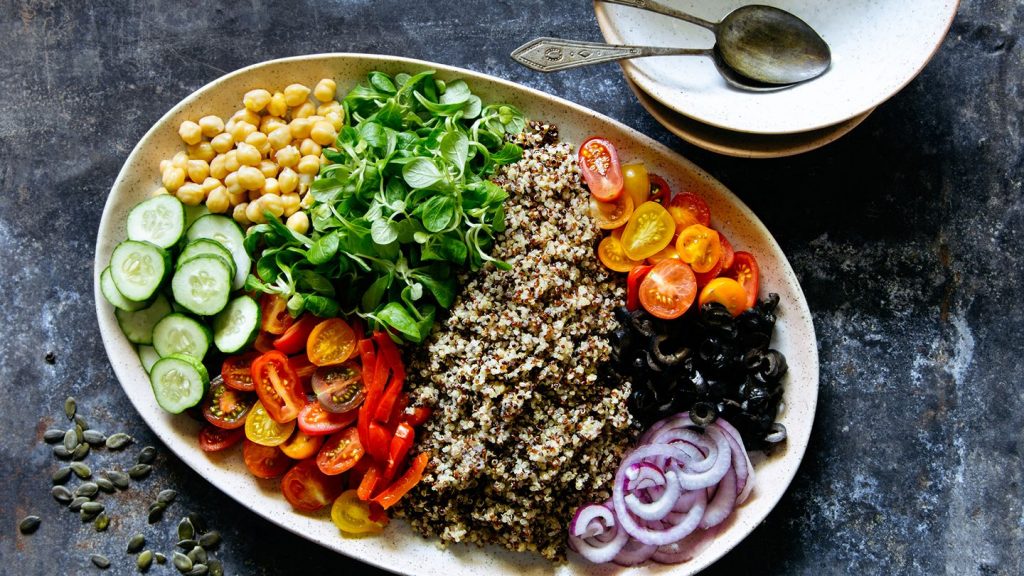
Sample menu
Below is a sample menu for 1 week of meals on the Mediterranean diet.
Feel free to adjust the portions and food choices based on your own needs and preferences, and add snacks as desired.
Monday
- Breakfast: Greek yogurt with strawberries and chia seeds
- Lunch: a whole grain sandwich with hummus and vegetables
- Dinner: a tuna salad with greens and olive oil, as well as a fruit salad
Tuesday
- Breakfast: oatmeal with blueberries
- Lunch: caprese zucchini noodles with mozzarella, cherry tomatoes, olive oil, and balsamic vinegar
- Dinner: a salad with tomatoes, olives, cucumbers, farro, grilled chicken, and feta cheese
Wednesday
- Breakfast: an omelet with mushrooms, tomatoes, and onions
- Lunch: a whole grain sandwich with cheese and fresh vegetables
- Dinner: Mediterranean lasagna
Thursday
- Breakfast: yogurt with sliced fruit and nuts
- Lunch: a quinoa salad with chickpeas
- Dinner: broiled salmon with brown rice and vegetables
Friday
- Breakfast: eggs and sautéed vegetables with whole wheat toast
- Lunch: stuffed zucchini boats with pesto, turkey sausage, tomatoes, bell peppers, and cheese
- Dinner: grilled lamb with salad and baked potato
Saturday
- Breakfast: oatmeal with raisins, nuts, and apple slices
- Lunch: a whole grain sandwich with vegetables
- Dinner: Mediterranean pizza made with whole wheat pita bread and topped with cheese, vegetables, and olives
Sunday
- Breakfast: an omelet with veggies and olives
- Lunch: falafel bowl with feta, onions, tomatoes, hummus, and rice
- Dinner: grilled chicken with vegetables, sweet potato fries, and fresh fruit
There’s usually no need to count calories or track macronutrients (protein, fat, and carbs) on the Mediterranean diet.
Healthy snacks
If you start feeling hungry between meals, there are plenty of healthy snack options you can enjoy on the Mediterranean diet.
Here are a few ideas to help you get started:
- a handful of nuts
- a piece of fruit
- baby carrots with hummus
- mixed berries
- grapes
- Greek yogurt
- hard-boiled egg with salt and pepper
- apple slices with almond butter
- sliced bell peppers with guacamole
- cottage cheese with fresh fruit
- chia pudding
Eating out
Many restaurant meals are suitable for the Mediterranean diet. Try to choose whole grains, vegetables, legumes, seafood, and healthy fat. It’s also key to enjoy your meal and savor it with good company, so choose something that sounds good.
Here are a few tips to help adapt dishes when you’re eating out:
- Choose fish or seafood as your main dish.
- Ask the server if your food can be cooked in extra virgin olive oil.
- Choose whole-grain bread, with olive oil instead of butter.
- Add vegetables to your order.
Shopping list
It’s always a good idea to shop at the perimeter of the store, which is where the whole foods are typically found.
Opt for nutrient-dense foods as much as possible, including fruits, vegetables, nuts, seeds, legumes, and whole grains.
Here are some basic Mediterranean diet items to add to your shopping list:
- Vegetables: carrots, onions, broccoli, spinach, kale, garlic, zucchini, mushrooms
- Frozen veggies: peas, carrots, broccoli, mixed vegetables
- Tubers: potatoes, sweet potatoes, yams
- Fruits: apples, bananas, oranges, grapes, melons, peaches, pears, strawberries, blueberries
- Grains: whole grain bread, whole grain pasta, quinoa, brown rice, oats
- Legumes: lentils, chickpeas, black beans, kidney beans
- Nuts: almonds, walnuts, cashews, pistachios, macadamia nuts
- Seeds: sunflower seeds, pumpkin seeds, chia seeds, hemp seeds
- Condiments: sea salt, pepper, turmeric, cinnamon, cayenne pepper, oregano
- Seafood: salmon, sardines, mackerel, trout, shrimp, mussels
- Dairy products: Greek yogurt, yogurt, milk
- Poultry: chicken, duck, turkey
- Eggs: chicken, quail, and duck eggs
- Healthy fats: extra virgin olive oil, olives, avocados, avocado oil
The bottom line
Though there’s not one defined Mediterranean diet, this dietary pattern is generally rich in healthy plant foods and relatively lower in animal foods, with a focus on fish and seafood.
It has been associated with numerous health benefits and may help stabilize blood sugar levels, promote heart health, enhance brain function, and more.
Best of all, you can adapt the principles of the Mediterranean diet in a way that works for you. If you dislike salmon and sardines but whole wheat pasta and olive oil are your favorites, start building delicious, Mediterranean-inspired meals with foods you love.
Your Shopping List:
Look around your kitchen to see what you still have available from the previous weeks. Now, begin to add to what you have with items in the Mediterranean plan. Try more seafood or chicken, and lots of vegetables! Be sure to check our Facebook Group for amazing recipes to enhance your shopping lists and get your creative juices flowing!
Wellness 2022: Mediterranean – Intro

The Weekly Process:
In week 1 we started learning about reducing sugars in our body through the ketosis process. Our diets consisted of lean meats vegetables and fats. As we progressed into week 2, we looked into “bio-hacking” this same metabolic process with the “Bullet Proof Diet” and the addition of intermittent fasting.
This week we will take what we have learned so far and tweak it just a little.
The Mediterranean diet has received much attention as a healthy way to eat, and with good reason. The Mediterranean diet has been shown to reduce the risk of heart disease, metabolic syndrome, diabetes, certain cancers, depression, and in older adults, a decreased risk of frailty, along with better mental and physical function.
Below is the rundown on the Mediterranean Diet. Our first small change this week is that we will be eating less meat, but there are other important things to consider on this dietary guideline, and that is WHEN to eat.
What is the Mediterranean diet?
The traditional Mediterranean diet is based on foods available in countries that border the Mediterranean Sea. The foundation for this healthy diet includes
- an abundance of plant foods, including fruits, vegetables, whole grains, nuts and legumes, which are minimally processed, seasonally fresh, and grown locally
- olive oil as the principal source of fat
- cheese and yogurt, consumed daily in low to moderate amounts
- fish and poultry, consumed in low to moderate amounts a few times a week
- red meat, consumed infrequently and in small amounts
- fresh fruit for dessert, with sweets containing added sugars or honey eaten only a few times each week
- wine consumed in low to moderate amounts, usually with meals.
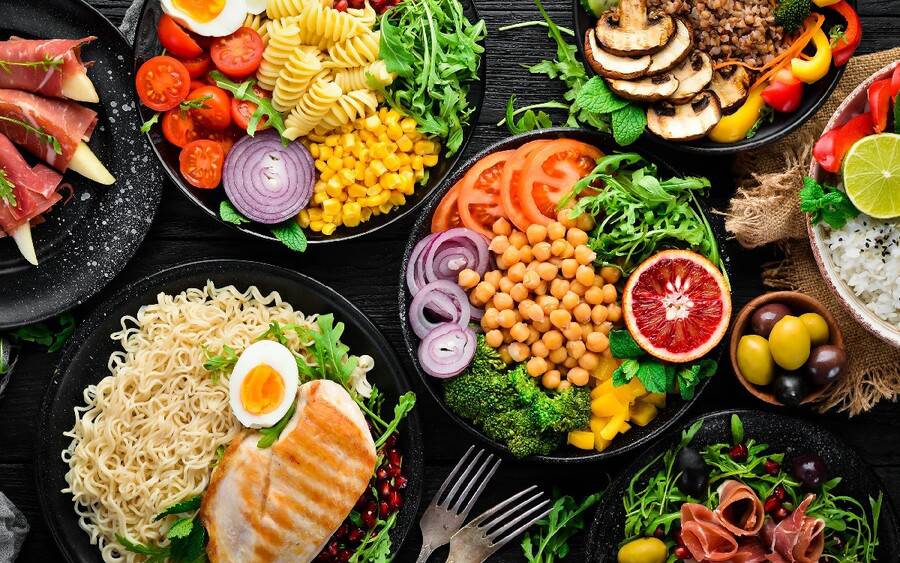
How to bring the Mediterranean diet to your plate
How can you incorporate these healthy foods into your everyday life? Here are some small changes you can make. Pick one change every week and incorporate it gradually. Start with the changes you think will be the easiest.
- Switch from whatever fats you use now to extra virgin olive oil. Start by using olive oil in cooking, and then try some new salad dressings with olive oil as the base. Finally, use olive oil in place of butter on your crusty bread.
- Eat nuts and olives. Consume a handful of raw nuts every day as a healthy replacement for processed snacks.
- Add whole-grain bread or other whole grains to the meal. Select dense, chewy, country-style loaves without added sugar or butter. Experiment with bulgur, barley, farro, couscous, and whole-grain pasta.
- Begin or end each meal with a salad. Choose crisp, dark greens and whatever vegetables are in season.
- Add more and different vegetables to the menu. Add an extra serving of vegetables to both lunch and dinner, aiming for three to four servings a day. Try a new vegetable every week.
- Eat at least three servings a week of legumes. Options include lentils, chickpeas, beans, and peas.
- Eat less meat. Choose lean poultry in moderate, 3- to 4-ounce portions. Save red meat for occasional consumption or use meat as a condiment, accompanied by lots of vegetables, as in stews, stir-fries, and soups. Eat more fish, aiming for two to three servings a week. Both canned and fresh fish are fine.
- Substitute wine in moderation for other alcoholic beverages. Replace beer or liquors with wine — no more than two 5-ounce glasses per day for men, and one glass per day for women.
- Cut out sugary beverages. Replace soda and juices with water.
- Eat less high-fat, high-sugar desserts. Poached or fresh fruit is best. Aim for three servings of fresh fruit a day. Save cakes and pastries for special occasions.
- Seek out the best quality food available. Farmer’s markets are an excellent source of locally grown, seasonal foods.
- Finally, try to have dinner as a family as often as possible. Food as a communal, shared experience is a big part of the Mediterranean approach.
A Mediterranean Day
There are many ways to incorporate the delicious foods of the Mediterranean diet into your daily menu. Here are a few ideas to get you started.
Breakfast:
- whole-grain bread topped with a small amount of low-fat cheese and slices of fresh tomato, drizzled with a little extra virgin olive oil
- vegetable omelet made with mushrooms, spinach, and onions cooked in olive oil with crusty whole-grain bread
- plain Greek yogurt topped with nuts and fresh berries.
Lunch:
- Greek salad made with chopped mixed greens, kalamata olives, tomatoes, fresh parsley, feta cheese. Dress with extra virgin olive oil and freshly squeezed lemon
- chickpea and farro salad with red peppers, spring onions, and fresh oregano, dressed with extra virgin olive oil and lemon juice
- vegetarian pizza topped with part-skim mozzarella cheese, roasted broccoli, onions, green peppers, and carrots.
Dinner:
- grilled vegetable kabobs with shrimp, toasted quinoa salad, and mixed green salad with pine nuts
- chicken stir-fried in olive oil with broccoli, cauliflower, asparagus, and yellow peppers, served over brown rice
- steamed mussels with spinach-orzo salad and minestrone soup.
Journal Entry:
First of all, let’s reflect on the past two weeks.
- Has it been a fairly easy transition to follow, or is it a struggle?
- Did you prefer week 1 or week 2 – why?
- How do you feel about the upcoming week?
- Have you been faithfully writing in your food and fitness logs?
Remember the journal is your personal information. Be honest with yourself and how you are feeling. Taking this time to reflect is a very important part of this wellness journey – and it allows us time to think.
Check-in daily! We have so much to share!
Wellness 2022: Bulletproof – Rest & Integrate
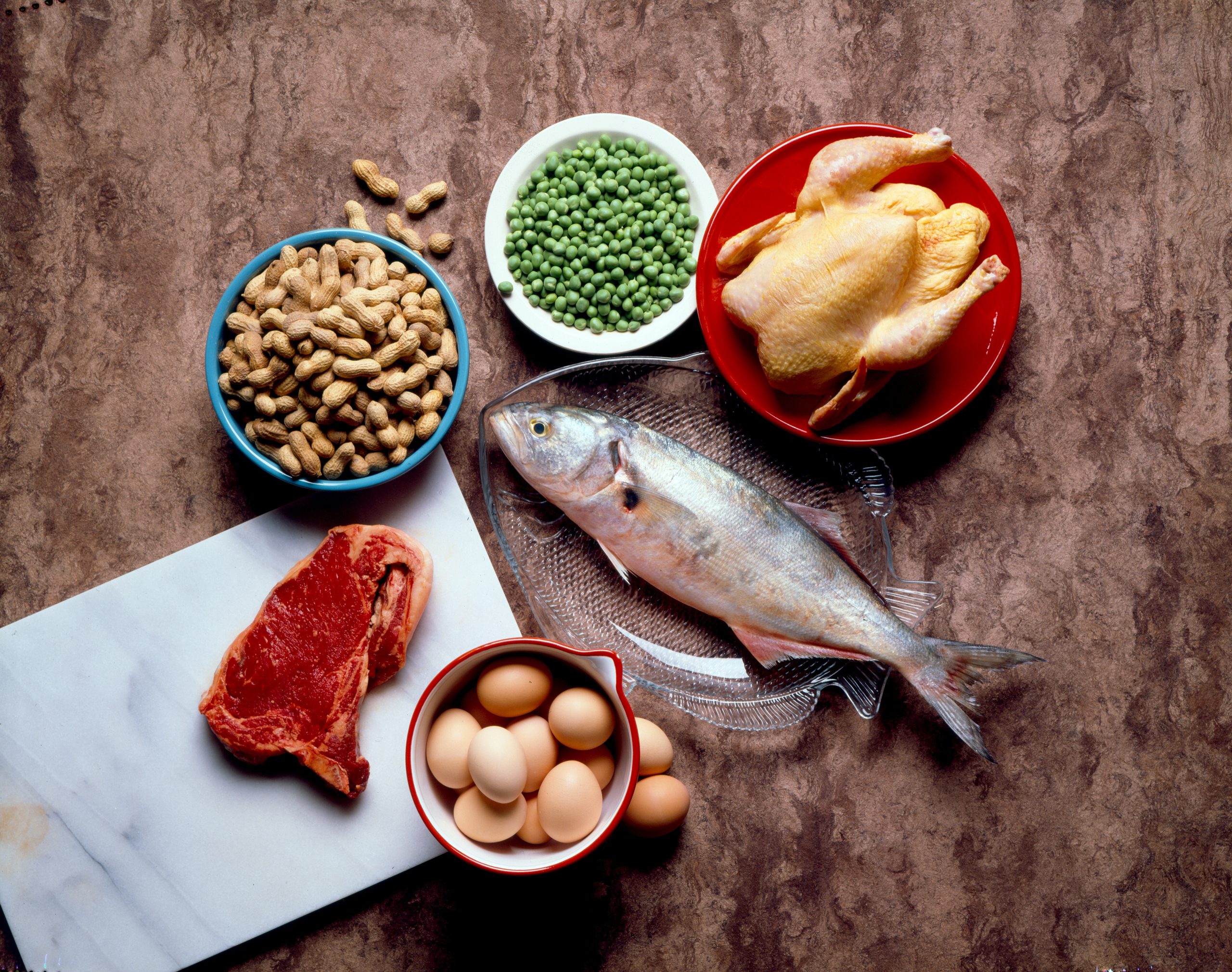
Welcome to the final day of week 2! You made it.
As we have talked about throughout this program, wellness is a combination of the mind, body, and spirit. If we are stressed, cortisol is released which causes the body to hold onto fat. This link explains more about how cortisol works.
So, one way to reduce stress is through mindfulness, connecting to how your body feels, understanding how your inner self affects your outer self. One of these ways is through learning about chakras, an aspect of Eastern medicine. We have seven chakras in the body as shown below.

Now we are not going to go into depth about what these chakras all represent but I do want to talk about the third one, shown in yellow above, which is known as the Solar Plexus or Naval Chakra. We have all heard the phrase “trust your gut” which is about listens to our instincts. But what does our “gut” have to do with intuition? Well, our gut aligns with this third chakra, and it is the energy of this chakra that we need to balance in order to be able to hear our intuition.
This chakra represents our personal power, governs our self-esteem, personal identity, digestion, and metabolism.
Chakra 101: An Introduction to the 7 Chakras
When this chakra is balanced, you’ll find that self-confidence, a sense of purpose, and self-motivation are present in your life. When presented with an issue, you’re able to let it go and not attach to the external circumstances at hand.
When out of alignment, you can experience digestion issues, low self-esteem, and have difficulty making decisions.
So, I encourage all you to think about how this relates to your own relationship to your intuition, especially as you go through this program which explores different wellness options. I’ll leave you with this video about how to use your intuition once you have connected to it.
Wellness 2022: Bulletproof – Takeaway

Pros and Cons: Potential downsides
Keep in mind that the Bulletproof Diet has several drawbacks.
Not rooted in science
The Bulletproof Diet claims to be based on solid scientific evidence, but the findings it relies upon are of poor quality and not applicable to most people. For instance, Asprey cites shoddy data claiming that cereal grains contribute to nutritional deficiencies and that the fiber in brown rice prevents protein digestion. However, cereal grains are often fortified with many important nutrients, and their consumption actually increases — not decreases — your intake of important nutrients. And while it’s known that fiber from plant foods like rice decreases the digestibility of some nutrients, the effect is rather small and of no concern as long as you’re consuming a well-balanced diet. Asprey also provides oversimplified views of nutrition and human physiology, suggesting that people shouldn’t regularly consume fruit since it contains sugar or that all dairy — except ghee — promotes inflammation and disease. In fact, fruit consumption is associated with weight loss, and dairy products have been shown to have anti-inflammatory effects.
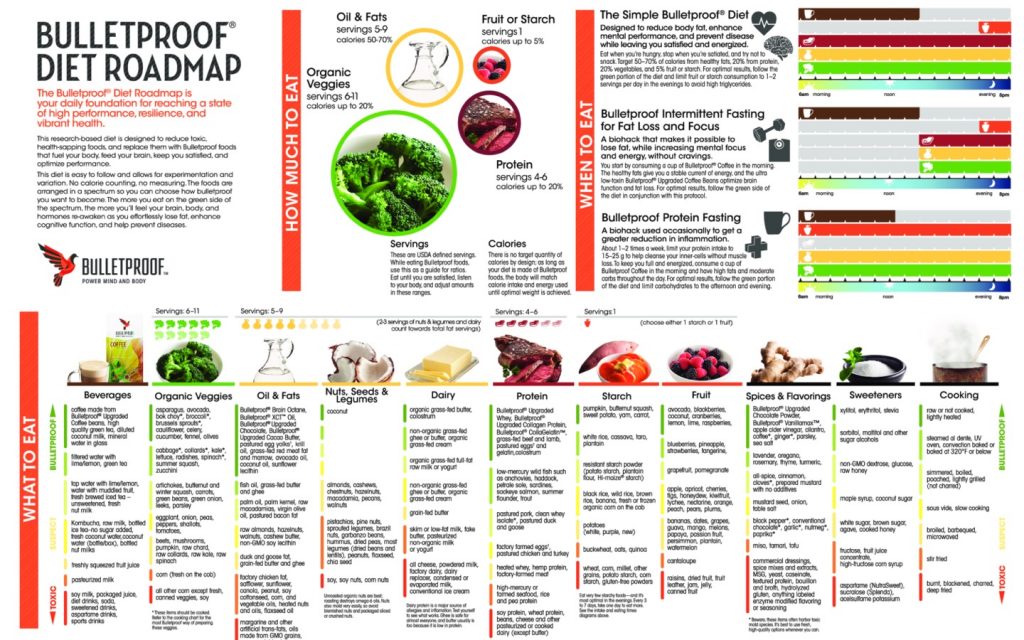
Can be expensive
The Bulletproof Diet can get expensive. Asprey recommends organic produce and grass-fed meats, stating that they’re more nutritious and contain less pesticide residue than their conventional counterparts. However, because these items are much more expensive than their conventional parts, not everyone may be able to afford them. While organically grown produce tends to have lower pesticide residue and may contain greater levels of certain minerals and antioxidants than conventionally grown produce, the differences are probably insignificant to have any real health benefit. The diet also recommends frozen or fresh vegetables over the often more affordable and convenient canned vegetables, despite there being no real health benefit.
Requires special products
The Bulletproof line of branded products makes this diet even more expensive. Many of the items in Asprey’s food spectrum that rank as Bulletproof are his own branded products. It’s highly dubious for any person or company to claim that buying their expensive products will make your diet more successful.
Can lead to disordered eating
Asprey’s continual classification of food as “toxic” or “Bulletproof” may lead people to form an unhealthy relationship with food.Consequently, this can lead to an unhealthy obsession with eating so-called healthy foods, termed orthorexia Nervosa. One study found that following a strict, all-or-nothing approach to dieting was associated with overeating and weight gain. Another study suggested that strict dieting was associated with the symptoms of an eating disorder and anxiety.
The bottom line
The Bulletproof Diet combines a cyclical ketogenic diet with intermittent fasting. It claims to help you lose up to a pound (0.45 kg) per day while boosting energy and focus. Yet, evidence is lacking. It may be beneficial for appetite control, but some may find it hard to follow. Keep in mind that the diet promotes inaccurate health claims and mandates the purchasing of branded products. Overall, you may be better off following proven dietary tips that won’t be as expensive and will promote a healthy relationship with food.
Journal Entry – “Daily Thoughts”
Do you need three meals a day? How did your body react to skipping breakfast? How do you feel? Would you maintain any of the last couple of weeks as a regular part of your routine?



